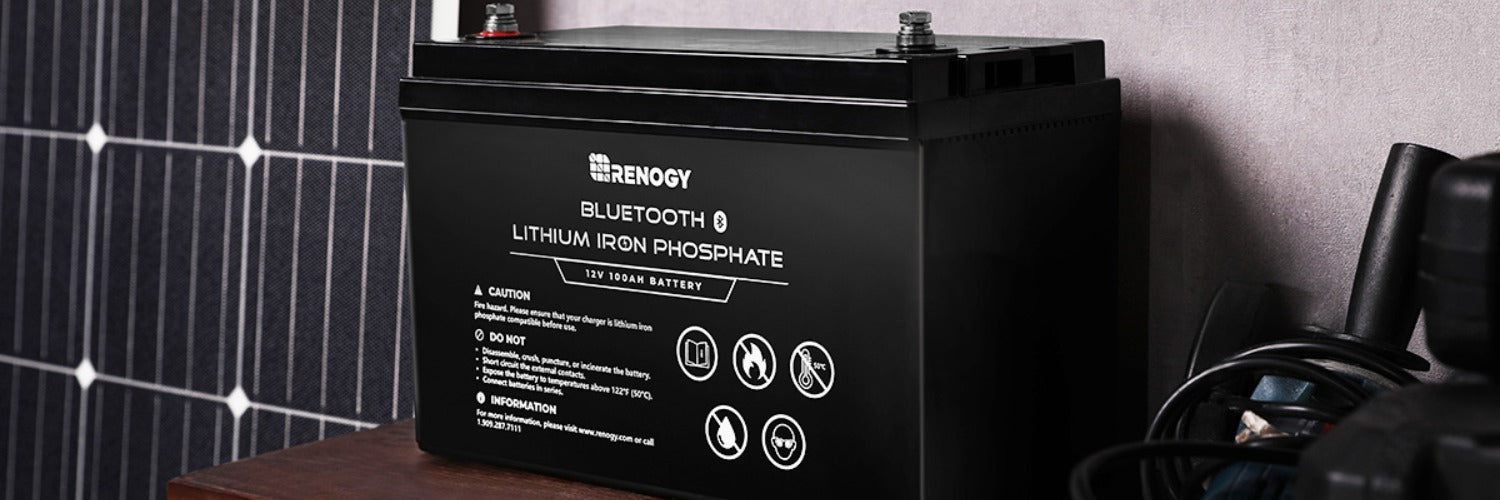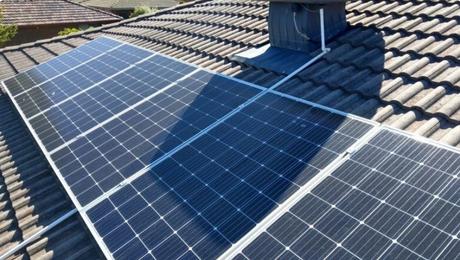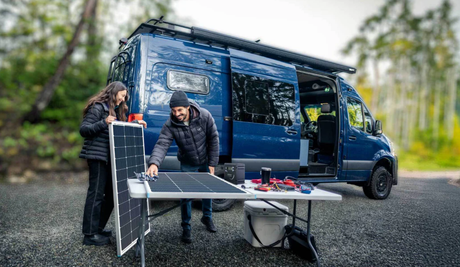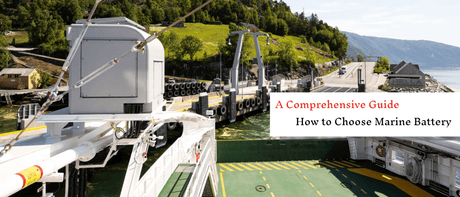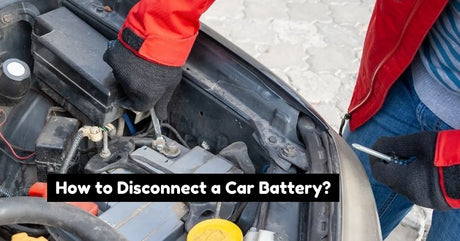With all the different versions of solar batteries for sale, it can be tricky to choose. And, if you're not even sure what a deep cycle battery is, the choice can be even more complicated.
Flooded lead acid, an AGM battery, or a lithium phosphate battery? How do you know which to choose? And how do you know your chosen battery will fit in with your solar panel system?
This blog starts with the basics and tells you exactly what a deep cycle battery is. By keeping these few facts in mind, you'll be able to hopefully choose a battery that will work best for you in your unique circumstances, whether it is to power your electrical motor or your off-grid solar system.

What is a deep cycle battery mean?
Before diving into the meaning of deep cycle batteries, you need to have a general understanding of DoD, or Depth of Discharge, one of the most important factors defining a battery's capacity. DoD indicates the percentage of discharge relative to the battery's overall capacity. Batteries discharging up to 80 to 100% are called deep cycle batteries. We also have another article telling you more about deep cycle batteries.
What is the difference between a deep cycle battery and a regular one?
It is crucial to know the difference between a deep cycle battery and a regular one, which is easy to confuse, as deep cycle batteries look like standard batteries. Both are constructed with similar elements, including a positive and negative terminal and electrolyte.
But that's where their resemblance ends. The two types of batteries vary in many ways:
Different applications due to varied DoD
Regular batteries are often used as a starter to crank an engine. They discharge about 2% -5% of their power at one time, and in fact, they may never lose more than 20% of their charge during their lifetime.
Deep cycle batteries are often found on electrical appliances such as golf buggies. They tend to keep discharge at a low flow and sustain for a long period. They can discharge up to 80 perfect to 100 percent, But manufacturers suggest discharging them to 45% and recharging them at that level can effectively prolong the battery life.
Varid thicknesses of interior metal plates
Deep cycle batteries are designed with thicker built-in metallic plates, resulting in a reliable discharge of electricity. In contrast, conventional batteries feature thinner plates, which can lead to a burst of electrical charge in a short time.
Different recharging method
When a deep cycle battery's discharge rate reaches the recommended DoD, you can top off the battery by connecting it to a power source. Traditional car batteries discharge about 2-5% each time and can only be recharged by the vehicle's alternator when the car is running.
Types of deep cycle batteries
A deep cycle function can work with lithium and lead-acid battery technologies. In other words, lithium and lead-acid batteries can be used as deep cycle batteries.

Lead-acid batteries can be divided further into flooded batteries and sealed lead-acid batteries. Furthermore, sealed acid batteries include two types of well-developed batteries, AGM and gel batteries.
Each type of deep cycle battery has its pros and cons. Let's break them down, respectively.
Flooded Lead Acid battery
Sometimes called 'wet cells,' flooded lead acid deep cycle batteries have been around for a long time. In the interior structure of this battery, lead plates are inundated in a mixture of water and sulfuric acid. The resulting chemical reaction can produce gas and eventually make the electrolyte level in the battery drop, so one has to add water from time to time. It has to be mounted in the right position, or you may risk acid leakage. Its lifespan is short, lasting only three to five years.
AGM battery
AGM is the acronym for 'Absorbent Glass Mat.' This glass mat is a thin fibreglass wall between the lead plates of a battery. The mat acts as a buffer and keeps the electrolyte fluid from spilling. Also due to the sealed construction, AGM batteries are much more shock- and vibration-resistant and great for colder climates. Better still, they have excellent discharge performance. They are not inexpensive but remain a pretty worthwhile choice among their counterparts.
Gel battery
Gel batteries are designed with a gelled electrolyte suspended in a silica agent. The gel quality has rent the battery type a wider operating temperature range, longer cycle life, as well as the advantage of being spill-proof. They also feature better recovery capability after deep discharge.
Lithium-Ion battery
Lithium batteries are equivalent to the 'new kids on the block.'
30% lighter than lead acid batteries, these batteries recharge super fast and have an extremely long life. A lithium battery will also give you constant power and won't dim as the battery loses charge.
A recent form of this battery is the LiFePO4 battery, frequently used in solar panel generators and backup power systems.
Lithium batteries are the most costly option, but their large capacity and amazing cycle life have made them the most powerful candidate on the market.
Will my deep cycle battery last for a long time?
Now that you know about the different types of deep cycle batteries, you'll know that the answer to this question will depend on the kind of battery you choose, how it is used and how well the battery is maintained.

In general, a flooded lead acid battery will last 3-5 years in a well-maintained condition, an AGM and Gel battery will last 6-10 years, and a lithium battery for up to 20 years.
The secret to getting the maximum value out of your deep-cycle battery is maintaining it. Controlling the discharge depth deliberately is one of the most effective ways to prevent the battery from wearing out fast.
What can a deep cycle battery be used for?
Deep cycle batteries are great for renewable energy storage or as part of a solar panel system, although not every solar power setup needs batteries.
However, you'll need a solar battery if you live in a motorhome or camper van or if you need a regular source of energy on a boat.

Also, deep cycle batteries are great for homeowners to have continued energy access in case of outages. Many people nowadays choose to have a 'mixed' solar system that can access both the grid and a deep cycle battery.
How to choose a deep cycle battery for solar panels?
There several aspects you need to factor in. If you need more details about choosing the best solar battery storage in Canada, you can check this article here.
Budget
Deep cycle batteries cost around $100 for a cheap lead acid battery but over $1500 for the lithium option. However, there are more things to consider than the upfront cost, for example, you will also have to take the maintenance cost into your consideration.
Battery capacity
Deep cycle batteries measure capacity in 'total amp hours.' Calculate your energy needs in kWh, and choose the battery with the capacity that hits your need.
Compatibility with your solar power system
The voltage of your battery bank should mesh with the total of your solar system. Most solar panels come in 12V and 24V options, and most RVs and boats will also use a 12V deep cycle battery.
Cycle life
Most deep cycle batteries will also specify how many charge- and discharge cycles any given battery can give. This information is necessary when considering what battery to buy for your solar power system.
Is it possible to charge my deep cycle battery with a solar panel?
In short, we can tell you, 'Yes.'
The slightly longer answer is that charging your battery with solar panels is not straightforward. You can't just hook everything up and hope that it will work. You will need a solar charge controller to regulate charging and a power inverter with all the relevant cables and connectors. Many new users prefer to buy a solar power generator with all the right parts already included. For example, at Renogy, many selections of solar panel kits and auxiliaries are suitable for charging your deep cycle battery.

Any size of solar panel can technically charge a battery. Some only will take longer than others. In deciding which size solar panel to get, your requirements and individual usage are essential factors.
Last words
If you are looking for a deep-cycle battery for your solar power system, Renogy will be the right place to go. We have the best lithium iron phosphate batteries for sale, the best deep cycle battery chargers, and the best off-grid solar kits. Just visit the Renogy store and browse around. We are sure you can find what you want.
Related articles:
How Does a DC to DC Battery Charger Work?
How to Add a Backup Battery to an Existing Grid-Tied Solar System?
What is the Best Solar Battery for Solar Storage in Canada?
Do I need a solar battery charger?
The First All-In-One Off-Grid Energy Monitor And IOT Gateway

